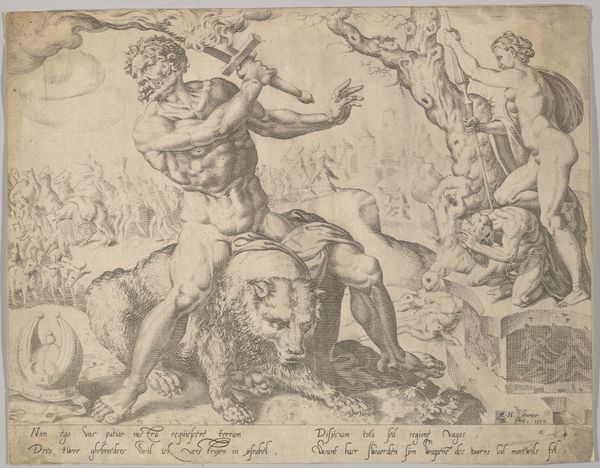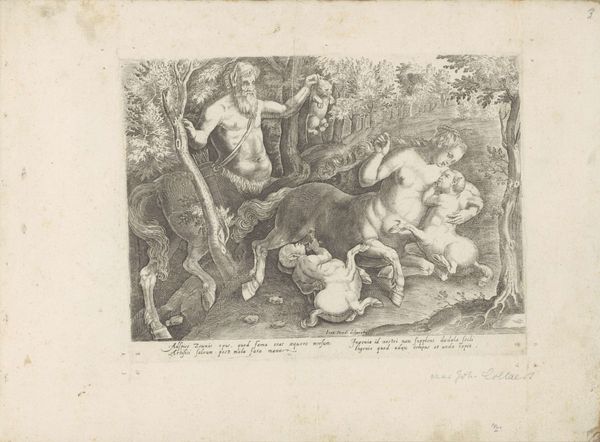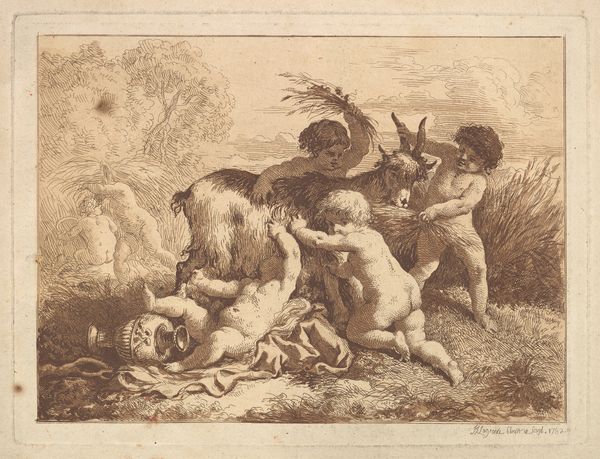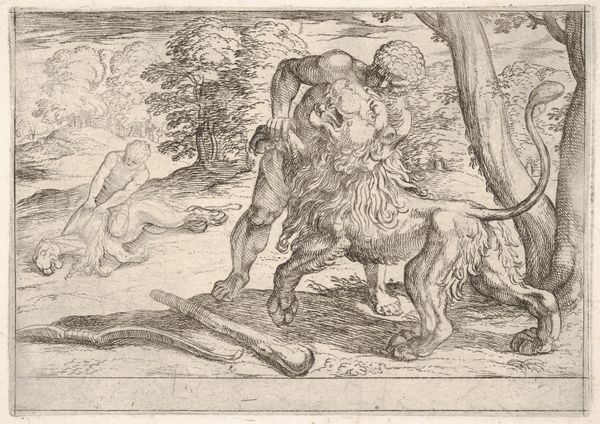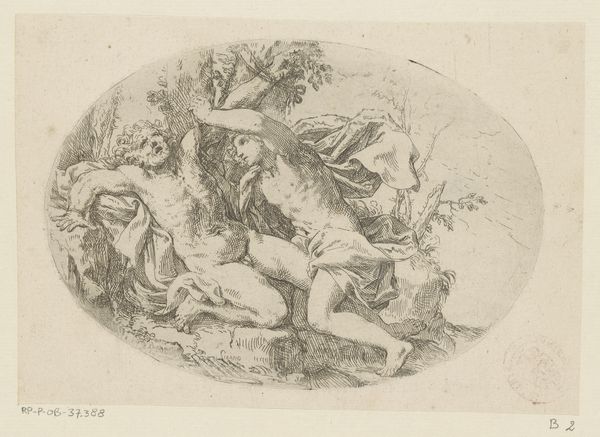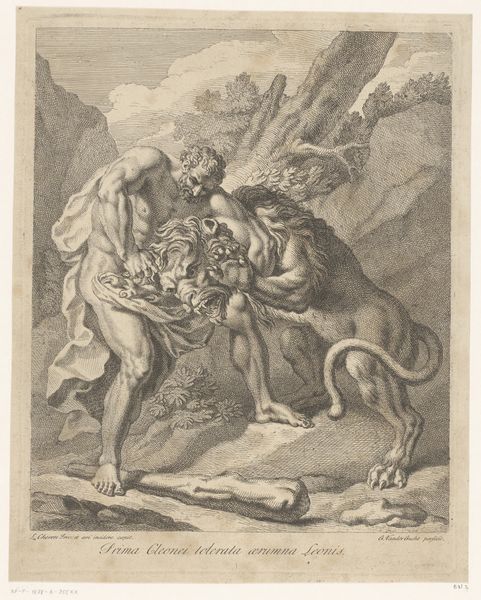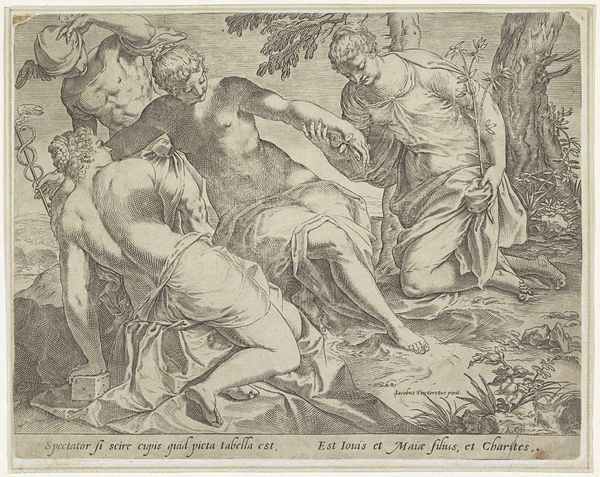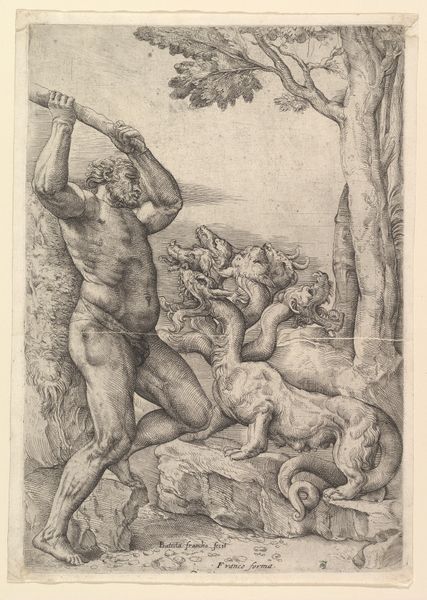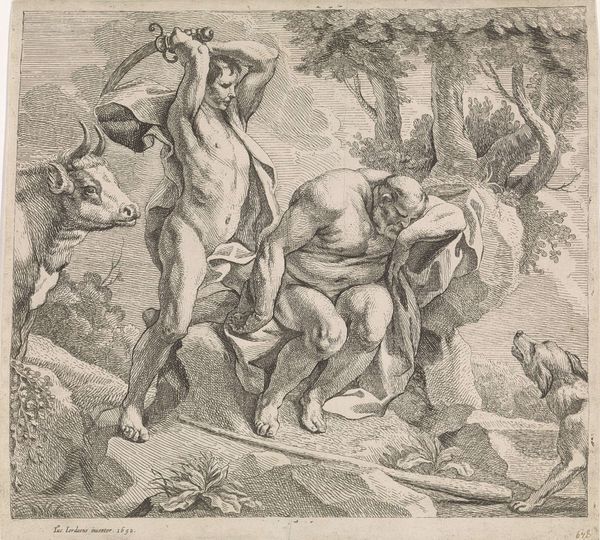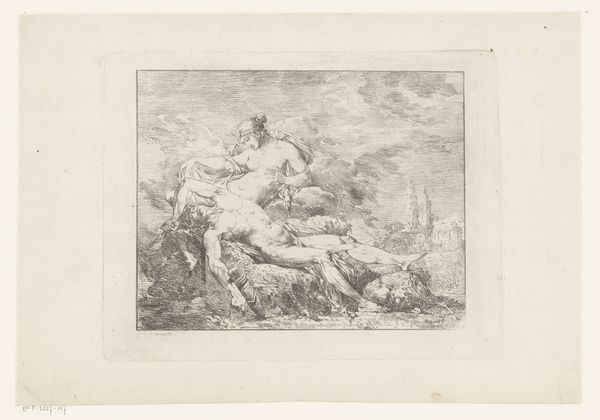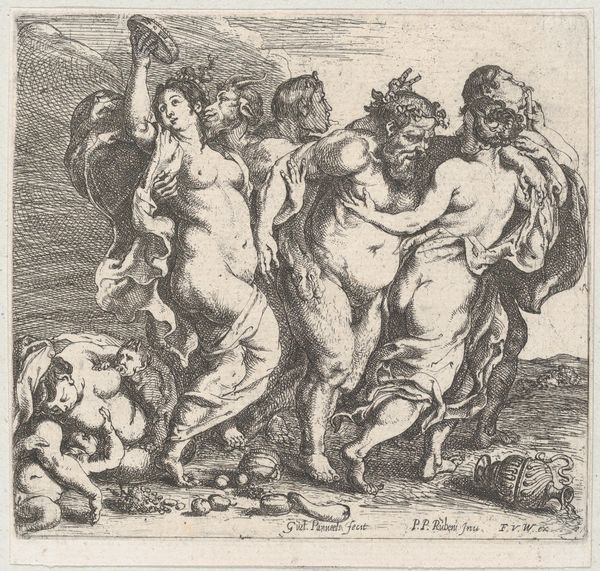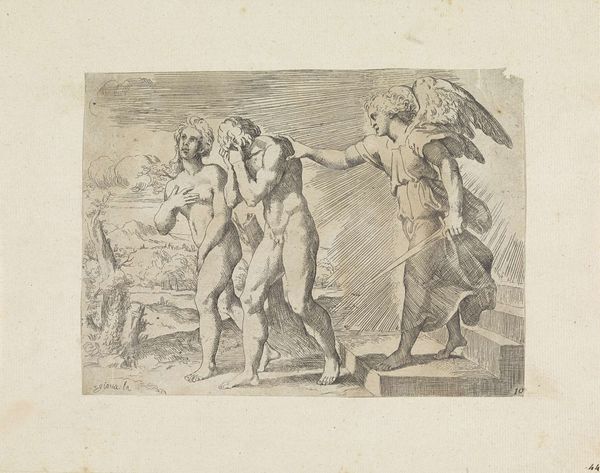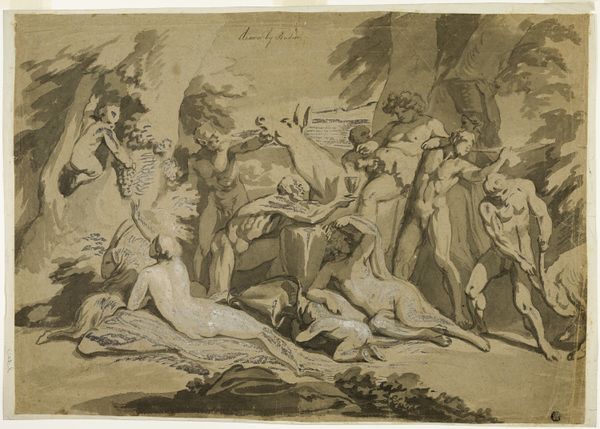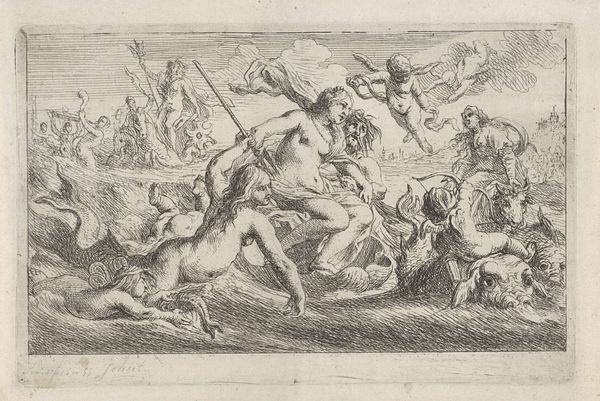
print, intaglio, engraving
#
ink drawing
#
narrative-art
# print
#
intaglio
#
old engraving style
#
figuration
#
history-painting
#
italian-renaissance
#
engraving
Dimensions: height 210 mm, width 265 mm
Copyright: Rijks Museum: Open Domain
Curator: Before us we have Dirck Volckertsz Coornhert's "Levi," created around 1550. It’s currently housed in the Rijksmuseum and rendered with delicate intaglio. What strikes you first about this engraving? Editor: Immediately, I am drawn to the sheer violence portrayed. The musculature of the central figure, his aggression with that sword, and even the burdened posture of the bear contribute to a sense of brute force. It is a composition seething with implied action. Curator: Indeed. Coornhert was known for his skill with line, his command over rendering figures in motion, exemplified by that central figure’s twist and the bear’s struggling gait. It's a showcase of technical precision that creates drama within a static medium. We can follow a linear rhythm that unites all of these elements and adds to this drama that you pointed out earlier. Editor: I can't help but connect this portrayal to the sociopolitical currents of the time. The artist seems to comment on the excesses and brutalities of power—of state, religious and military authorities— with a very detailed representation of the destructive side of violence and physical dominion. It is hard to ignore that connection when one thinks about social life back then. Curator: A potent point. The thematic link to the history of its creation invites further interpretation. Beyond its social significance, however, is its balanced execution. Coornhert uses the contrasts of light and dark to bring focus on key narrative sections. Do you think it helps emphasize specific narrative features of the engraving? Editor: Absolutely. The intense contrast isolates those physical forms within that composition you described—heightening not just their visual prominence, but their symbolic weight as well, even going back to that expression of raw dominance in contrast with that almost defenseless vulnerability from other characters in the work. It's fascinating how form and socio-political message work in such precise alignment. Curator: Precisely. It's this synthesis that marks "Levi" as a complex yet compelling example of art, and shows Coornhert's technical skill as well as his insights on power and dominance. Editor: Ultimately, this piece serves as a grim, but arresting comment on humanity and leadership. Its lasting power rests not only in the "how" of its construction, but in its depiction of something enduring in society: our own conflicts of will, values, and even our place on a scale of brute power and reason.
Comments
No comments
Be the first to comment and join the conversation on the ultimate creative platform.
